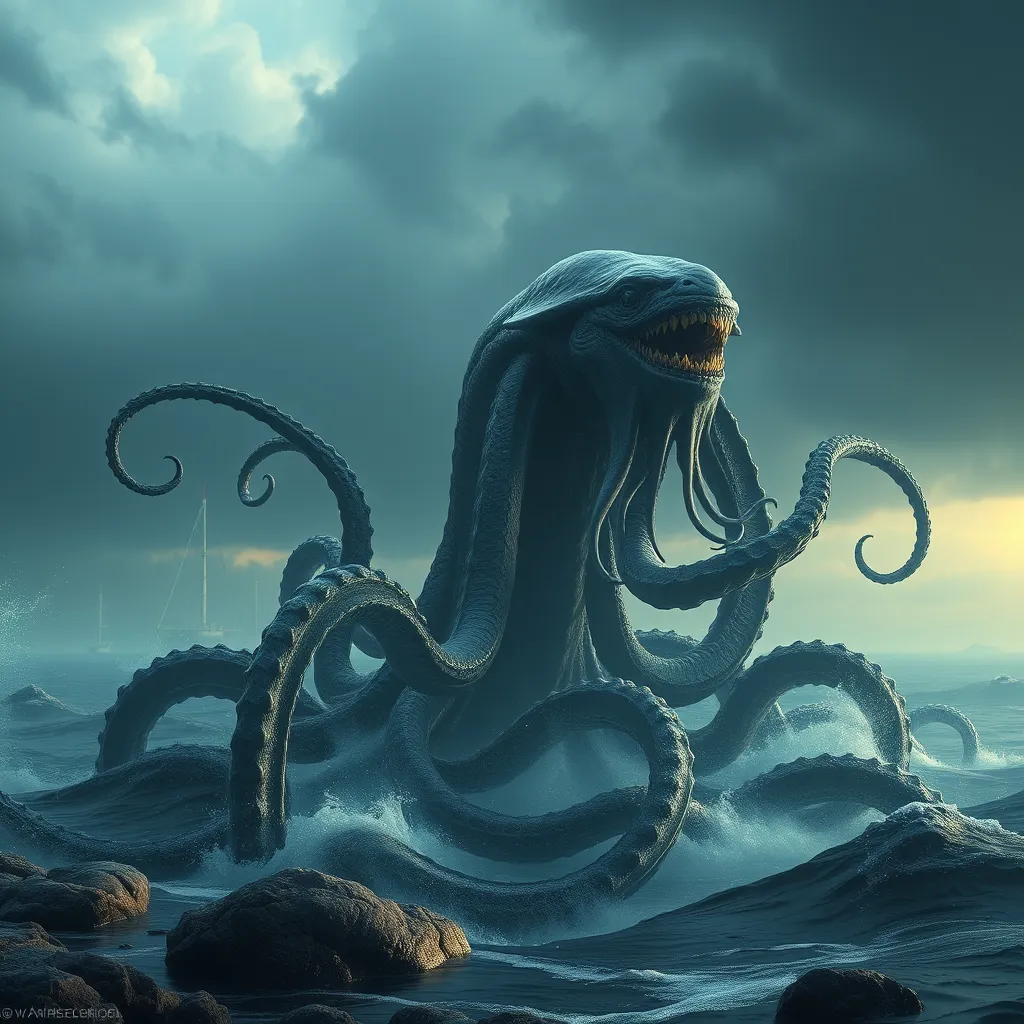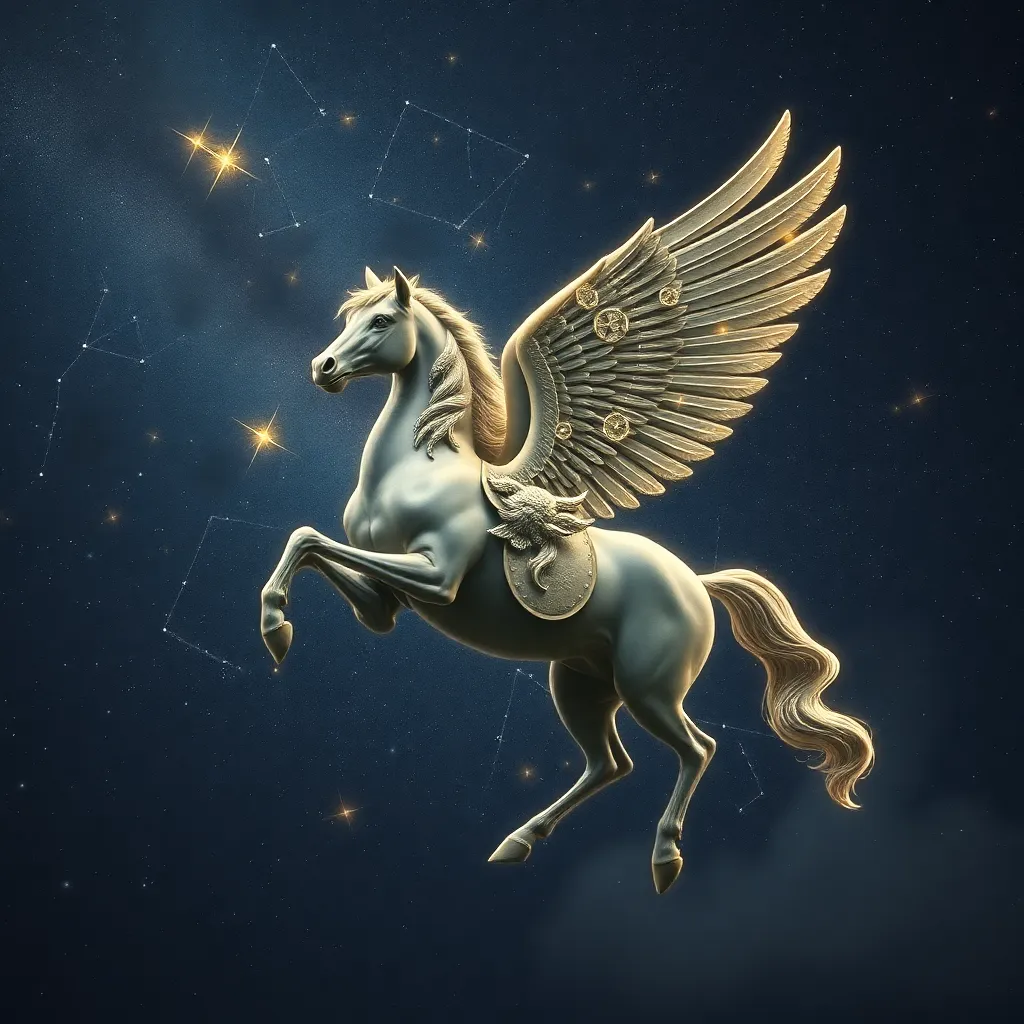The Kraken’s Evolution: Examining the Monster’s Adaptability and Change over Time
I. Introduction
The Kraken, a legendary sea monster, has captivated the imagination of people for centuries. With its enormous size and terrifying presence, it has become a prominent figure in both mythology and popular culture. From ancient folklore to modern adaptations, the Kraken embodies the mysteries of the ocean and the fears of the unknown. This article aims to explore the evolution and adaptability of the Kraken as a symbol and creature, tracing its journey through history, literature, and modern media.
II. Historical Origins of the Kraken
The origins of the Kraken can be traced back to early references in folklore and literature, often depicted as a giant cephalopod lurking in the depths of the ocean. These tales were particularly prominent in Scandinavian maritime culture, where sailors spoke of the creature’s terrifying ability to drag entire ships into the abyss.
A. Early references in folklore and literature
- The Kraken first appeared in print in Francesco Negri’s 1700 travelogue, where it was described as a “great sea monster.”
- Other early mentions include the writings of sailors and explorers who recounted encounters with the beast.
B. The Kraken in Scandinavian and maritime culture
In the rich tapestry of Scandinavian folklore, the Kraken symbolized the dangers of the sea. Fishermen and sailors told stories of the monster’s wrath, which served as both a cautionary tale and a way to explain the unexplained disappearances of ships.
C. The transformation from myth to monster: How the Kraken gained notoriety
As maritime exploration expanded, the tales of the Kraken spread beyond Scandinavia, gaining notoriety across Europe. The creature transformed from a local myth into a well-known monster, symbolizing the treacherous nature of the ocean and the perils faced by seafarers.
III. The Kraken in Literature and Art
The Kraken has made its mark in literature and art, inspiring countless works that reflect its enigmatic nature and the fears it represents.
A. Depictions in classic literature
- Jules Verne’s “Twenty Thousand Leagues Under the Sea” features a giant squid that evokes the Kraken’s terror.
- Alfred Lord Tennyson’s poem “The Kraken” paints a vivid picture of the monster as it rises from the depths.
B. Artistic representations through the ages
Artists have long been fascinated by the Kraken, leading to various representations in paintings and sculptures. From 19th-century illustrations to modern digital art, the Kraken continues to inspire creativity and interpretation.
C. The impact of literature and art on the Kraken’s mythos
Through literature and art, the Kraken’s mythos has evolved, shaping public perception and contributing to its status as a cultural icon. These depictions have solidified the Kraken’s place in the collective imagination, allowing it to adapt to changing societal views.
IV. The Kraken in Modern Media
In contemporary times, the Kraken has found new life in films, television, and video games, showcasing its adaptability in the modern landscape of storytelling.
A. The Kraken in films and television
- In “Pirates of the Caribbean,” the Kraken is portrayed as a fearsome creature that wreaks havoc on the high seas.
- “Clash of the Titans” features a dramatic depiction of the Kraken, further cementing its status in popular culture.
B. Video games and interactive media featuring the Kraken
The Kraken has also made its way into video games, serving as a formidable enemy or a mythical creature to be encountered. Games like “Sea of Thieves” and “Assassin’s Creed IV: Black Flag” allow players to engage with the Kraken in immersive ways.
C. The role of the Kraken in contemporary storytelling and its cultural relevance
The Kraken’s presence in modern media reflects ongoing themes of adventure, fear, and the unknown. As a symbol of nature’s power, the Kraken continues to resonate with audiences, bridging the gap between ancient fears and contemporary storytelling.
V. Symbolism and Interpretation
The Kraken serves as a potent symbol of the unknown and the fear of the sea, embodying humanity’s complex relationship with nature.
A. The Kraken as a symbol of the unknown and the fear of the sea
For centuries, the ocean has represented mystery and danger. The Kraken, as a monstrous inhabitant of the deep, symbolizes the fears that arise from humanity’s lack of control over nature.
B. Cultural interpretations of the Kraken across different societies
Different cultures interpret the Kraken in various ways, often reflecting their own experiences with the sea. In some societies, it is a symbol of chaos, while in others, it represents the awe-inspiring power of nature.
C. The adaptability of the Kraken’s symbolism in a changing world
As societal values shift, so too does the interpretation of the Kraken. From a monstrous threat to a misunderstood creature of the deep, the Kraken’s symbolism continues to evolve, adapting to contemporary concerns about the environment and the ocean.
VI. Scientific Inspirations and Real-Life Analogues
The myth of the Kraken is rooted in the natural world, drawing inspiration from real-life oceanic creatures.
A. The influence of cephalopods and oceanic creatures on the Kraken myth
Creatures like the giant squid and octopus have inspired tales of the Kraken. Their elusive nature and impressive size contribute to the lore surrounding the monster.
B. The role of marine biology in shaping public perception of the Kraken
As marine biology advances, our understanding of the ocean’s depths has grown. Discoveries of new species have led to renewed interest in the Kraken and similar myths, blurring the lines between fact and fiction.
C. The intersection of science and mythology: Lessons from the Kraken
The Kraken serves as a reminder of the importance of myth in understanding our relationship with nature. As we learn more about the ocean, we also recognize the power of stories to convey the mysteries that still elude us.
VII. The Future of the Kraken in Popular Culture
The Kraken’s legacy endures in popular culture, with potential for reinvention in contemporary narratives.
A. Trends in how the Kraken is portrayed in new media
Current trends show a shift towards more nuanced portrayals of the Kraken, often emphasizing themes of coexistence and understanding rather than fear and destruction.
B. The potential for reinvention in contemporary narratives
As societal values change, the Kraken can be reimagined in ways that reflect modern concerns about environmental conservation and the importance of respecting nature.
C. The ongoing legacy of the Kraken in a rapidly evolving cultural landscape
The Kraken remains a powerful symbol in a world that continues to grapple with the unknown. Its ability to adapt ensures that it will remain relevant in future storytelling.
VIII. Conclusion
The evolution of the Kraken highlights its adaptability as a symbol and creature throughout history. From its origins in folklore to its prominent role in modern media, the Kraken represents humanity’s fascination with the ocean and the unknown. As we continue to explore the mysteries of the sea, the Kraken will undoubtedly remain a significant part of our cultural narrative. Its enduring presence serves as a reminder of the importance of myth in understanding our relationship with nature and the mysteries that lie beyond the horizon.



